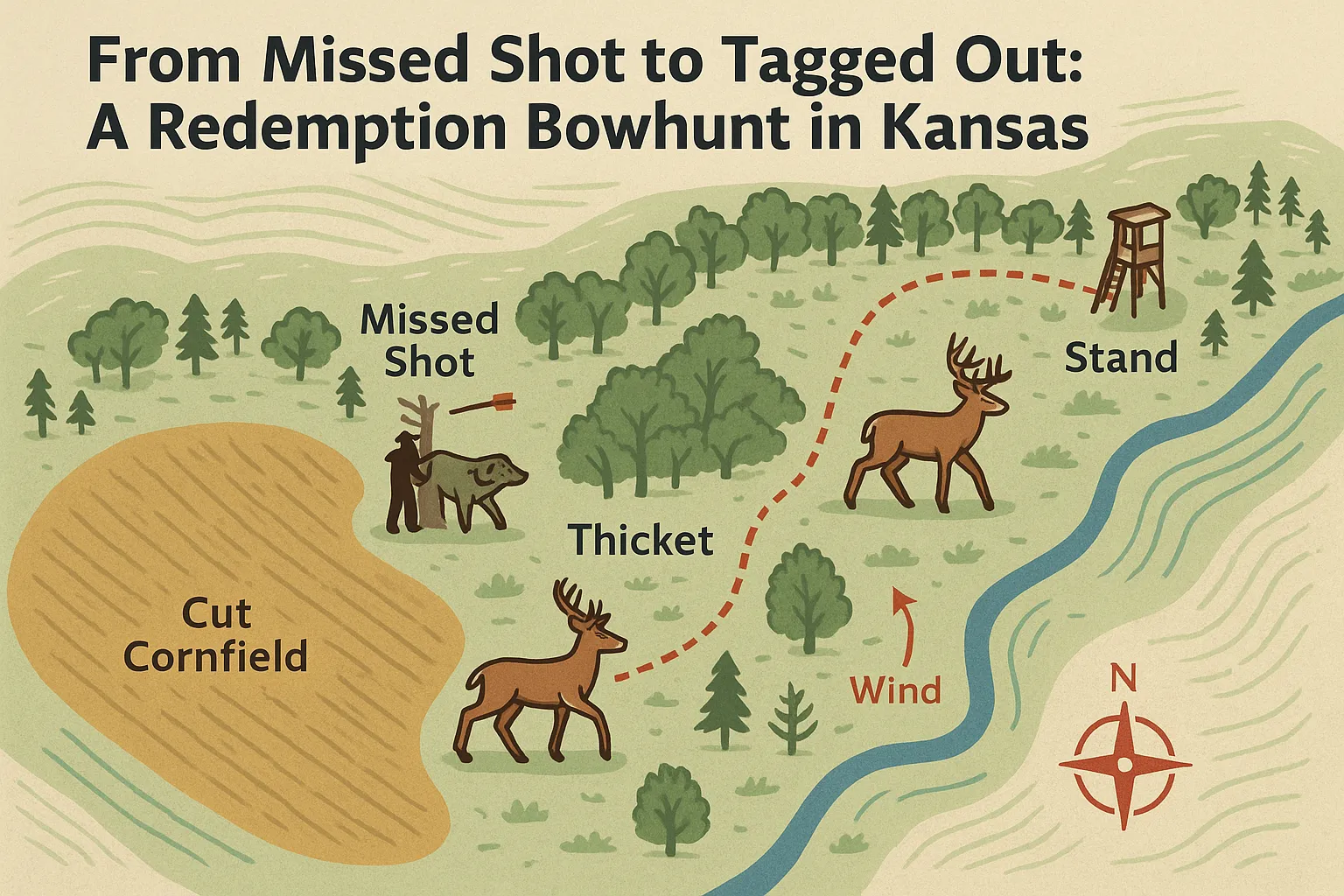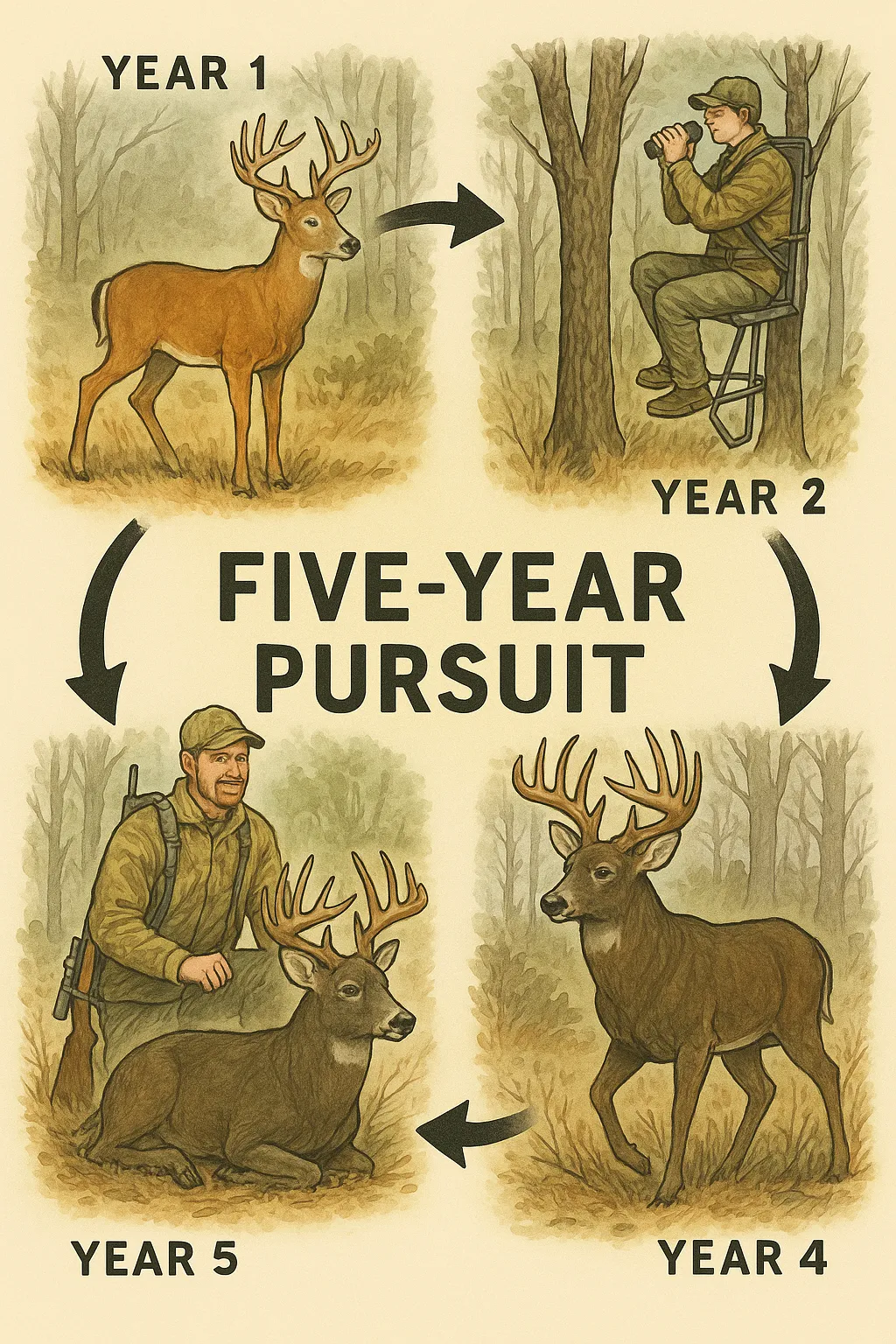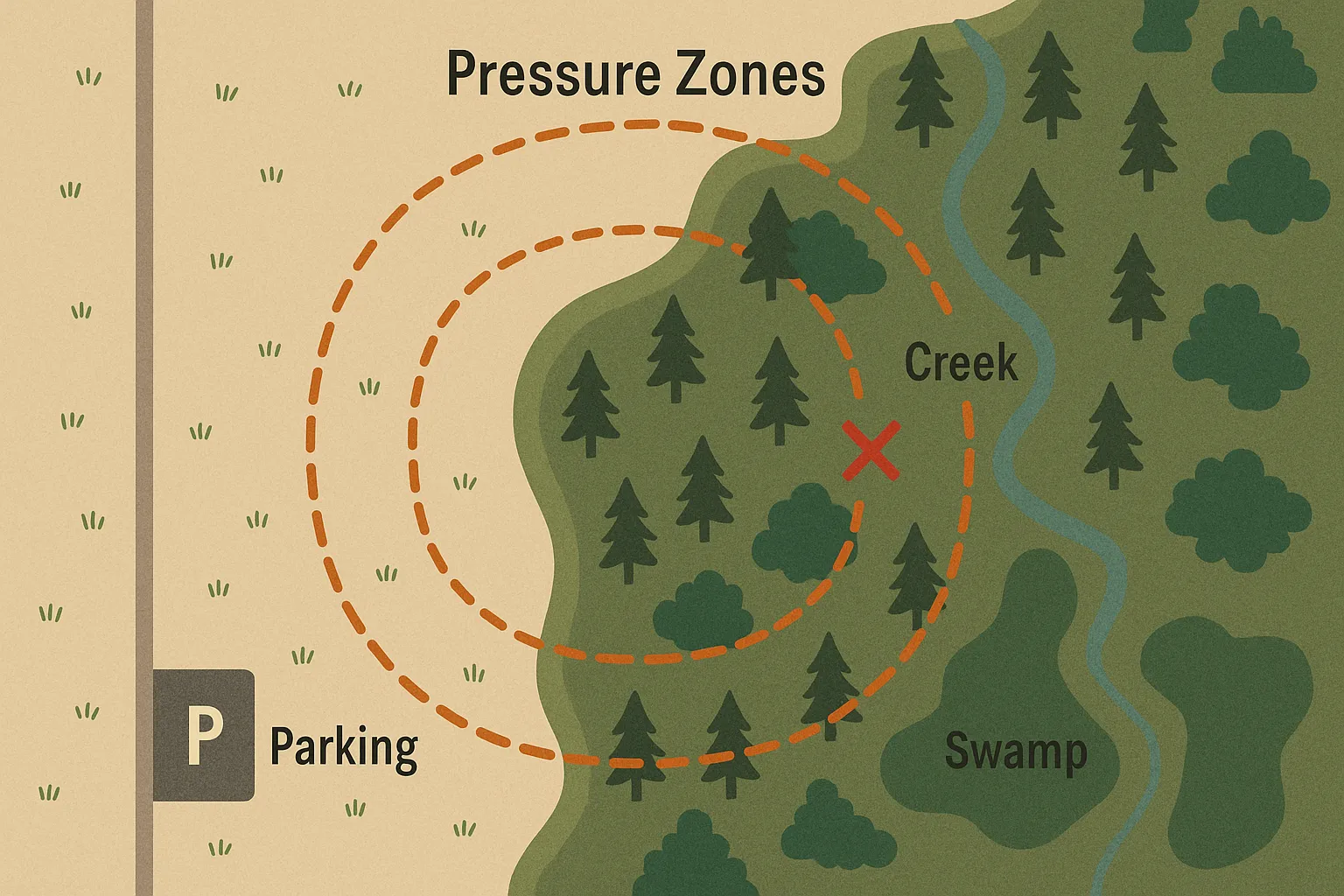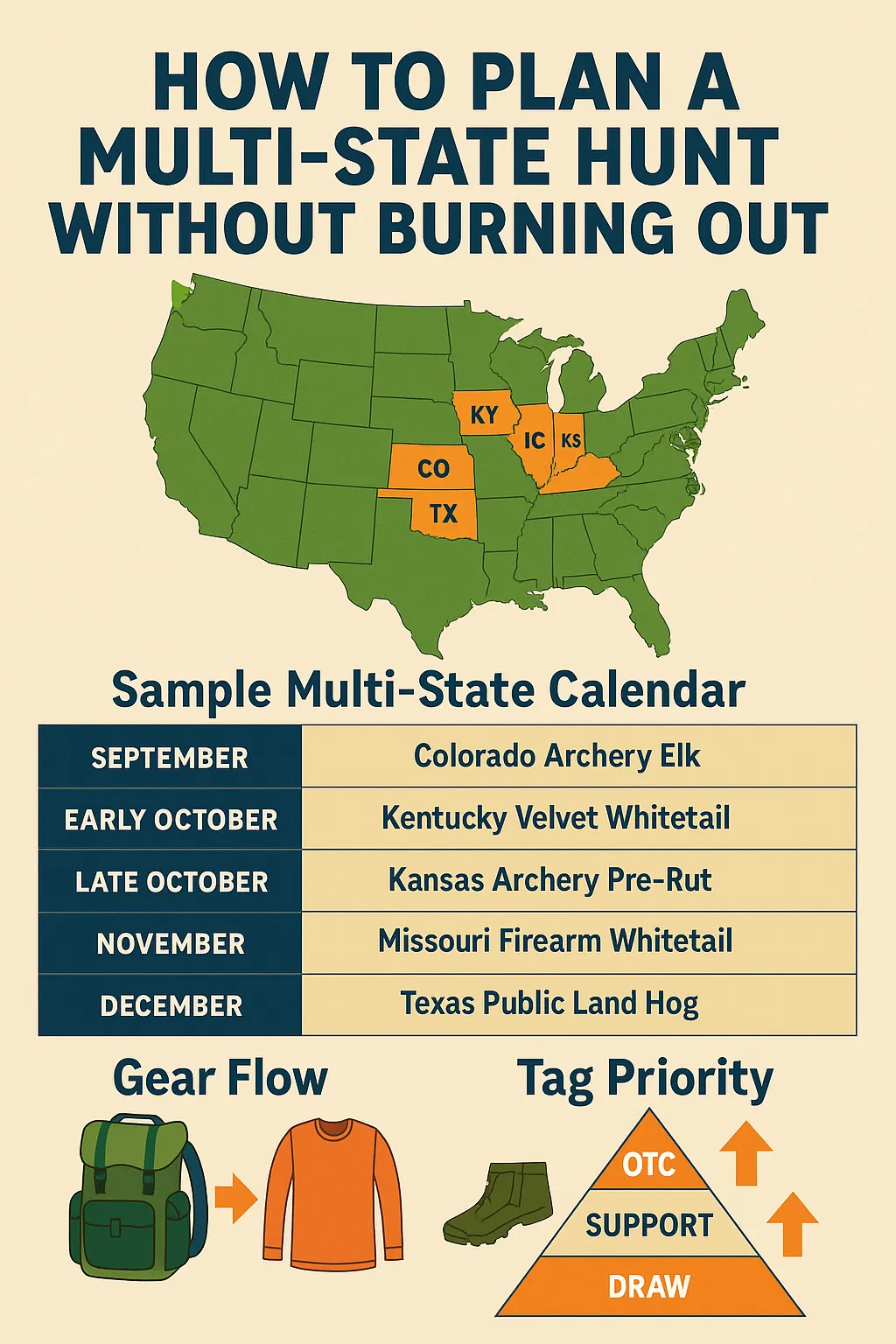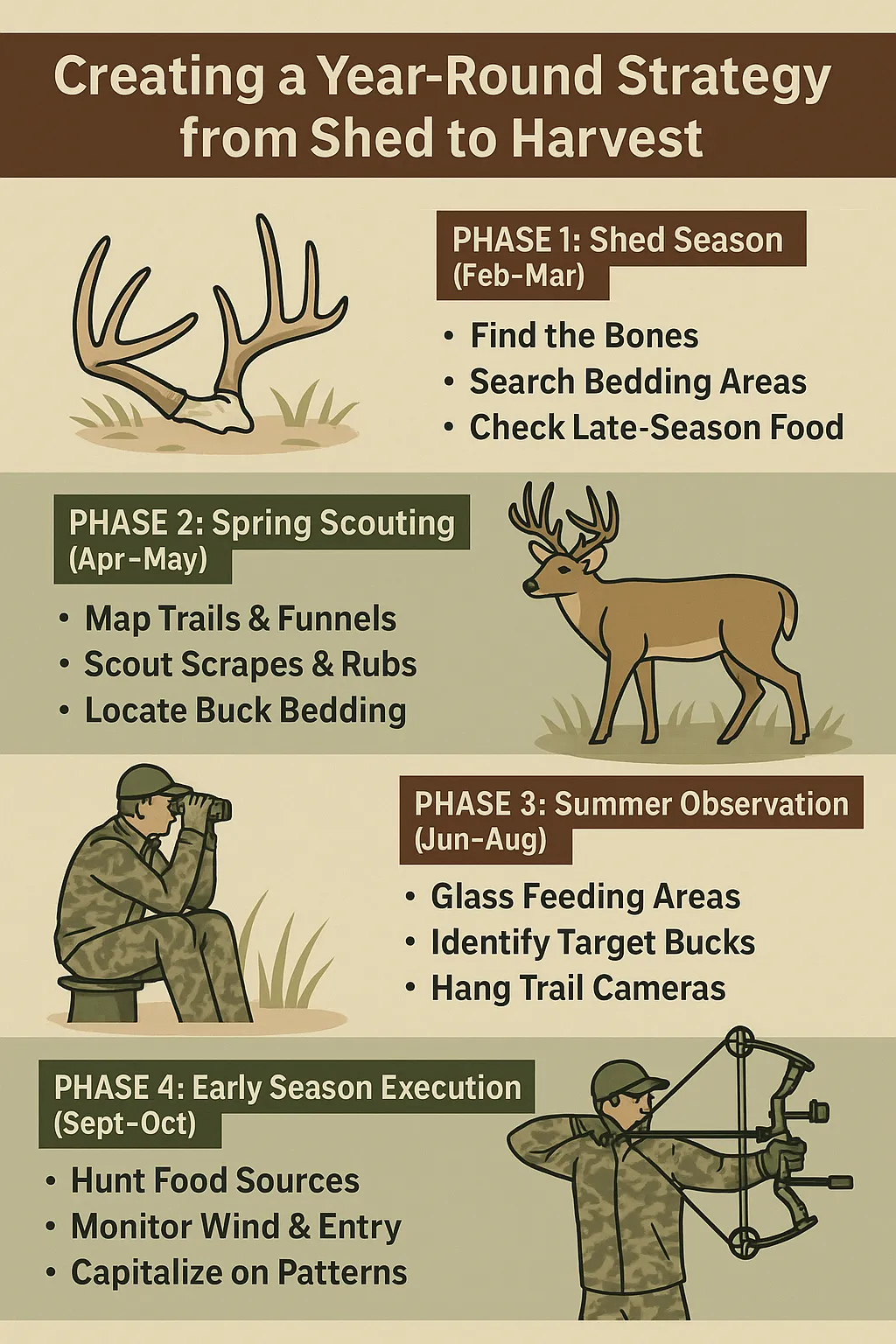
Creating a Year-Round Strategy from Shed to Harvest
Tagging a mature buck doesn’t begin in September—it begins when the snow melts and the first shed antler hits the forest floor. The most consistent DIY hunters aren’t just hunting in-season. They’re scouting, glassing, tracking, and planning all year. From February shed missions to November stands, each step builds the full story of a buck’s behavior.
This guide breaks down how to build a 12-month hunting plan, connecting winter intel to opening-day success.
🦴 Phase 1: Shed Season (Feb–March)
Find the Bones, Find the Buck
🧠 Goal: Learn who survived the season, and where they spend winter.
🎯 Key Areas to Search:
-
South-facing bedding slopes
-
Late-season food sources (cut corn, brassicas, acorns)
-
Fence crossings, creek edges, sunny benches
📍 Why It Matters:
Shed locations reveal post-rut survival, travel routes, and winter bedding areas—often just 200 yards from late-season stand sites.
🎙️ “I found both sides of a 140” buck in March—and killed him in October, just 400 yards from that bed.”
— Jesse T., Iowa
🌱 Phase 2: Spring Scouting (April–May)
Read the Sign Before It Grows Over
🧠 Goal: Map trails, bedding zones, rub lines, and scrapes while they’re still visible.
🎯 Key Actions:
-
Walk transition lines, inside corners, and topographic funnels
-
Pinpoint isolated beds, especially buck beds on points or ridges
-
Hang early season trail cams on field edges and travel corridors
📍 Pro Tip: Use colored pins in OnX/BaseMap for different rut zones: red for rubs, yellow for scrapes, blue for beds.
🎙️ “Scrapes and rubs glow in April, but vanish in June. I mark them now and hunt them later.”
— Becky M., Missouri
☀️ Phase 3: Summer Observation (June–August)
Watch Velvet Bucks Build Patterns
🧠 Goal: Identify individual bucks, group structure, and travel habits.
🎯 Best Tools:
-
Long-range glassing from beanfield or cloverfield edges
-
Time-lapse trail cams on high-use food sources
-
Salt/mineral stations (if legal) for inventory photos
📍 Watch For:
-
Consistency (appearing multiple times per week)
-
Grouping behavior (bucks often separate before season)
-
Edge vs. interior movement
🎙️ “I glassed one velvet 10 every Thursday night in July. I killed him September 6th off that same field edge.”
— Ray N., Kentucky
🍂 Phase 4: Early Season Execution (Sept–Oct)
Strike Before the Shift
🧠 Goal: Capitalize on summer patterns before they fall apart.
🎯 Hunt Tactics:
-
Field-edge setups near bedding (hunt evening thermals)
-
Hunt low impact—wind, access, and scent priority
-
Don’t overhunt early—wait for the right conditions
📍 When It Works: When bucks are still daylighting on food and haven’t broken into solo patterns or hard horned behavior.
🎙️ “Opening week isn’t about calling or chasing. It’s about sitting exactly where they already want to go.”
— Cassie R., Georgia
🦌 Phase 5: Rut Phase Planning (Oct–Nov)
Use Your Early Intel to Predict Pressure Response
🧠 Goal: Shift setups based on cruising and doe bedding behavior.
🎯 Tactics Based on Spring Scouting:
-
Hunt leeward ridges where rub lines were marked in April
-
Target scrape hubs marked in spring—most turn hot again late October
-
Hunt doe bedding areas identified during shed season
📍 Add Mock Scrapes with trail cams to identify mature bucks working through
🎙️ “I killed a rut buck coming through a pinch I mapped during shed season—it all loops back.”
— Grant P., Michigan
❄️ Phase 6: Late Season Lock-In (Dec–Jan)
Return to Where It All Began
🧠 Goal: Monitor food and bedding for cold-weather patterns
🎯 Late-Season Strategy:
-
Set up where you found sheds or trails near late-season food
-
Watch camera data for survivors and daylight movement
-
Be patient—hunt weather spikes and cold fronts
📍 Shed Intel Repeats: Deer return to winter zones if they’re not pressured
🎙️ “Same field, same trail, same buck. The sheds I found in March were the script for December.”
— Mike V., Ohio
📆 The Year-Round Plan at a Glance
| Season | Goal | Key Actions |
|---|---|---|
| Feb–Mar | Post-season intel | Shed hunting, winter trail recon |
| Apr–May | Permanent sign scouting | Rubs, scrapes, beds, terrain funnels |
| Jun–Aug | Patterning velvet bucks | Glassing, trail cams, food source sits |
| Sept–Oct | Strike pre-shift | Evening sits, high-wind setups |
| Nov | Rut setups based on terrain | Funnels, bedding edges, scrape zones |
| Dec–Jan | Cold-weather comeback | Food + thermal bedding hunts |
🧠 Pro Tips for Connecting Shed to Tag
✔️ Color-code everything: OnX, cam folders, or field notes—use colors for season and sign
✔️ Don’t burn sign: If it’s hot in March, treat it like gold until fall
✔️ Use year-over-year notes: Mark changes in crop rotation, pressure, and buck survival
✔️ Layer learning: Summer bucks rarely shift far—shed beds are often post-rut or late-season clues
🎙️ “A lot of guys scout for this year. I scout for next year—because the best intel takes time to ripen.”
— Sarah J., Kansas
📣 Tools to Run a Year-Round Strategy
-
Apps: OnX (custom waypoints), Spartan Forge (seasonal buck prediction), HuntStand
-
Trail Cams: Browning, Tactacam Reveal, Bushnell Cell Core
-
Optics: 10x binos, tripod mount, rangefinder with angle comp
-
Journaling: Field logbook, Google Sheets, or voice memos with location pins
💡 Pro Tip: A shed is a starting point. The tag is the ending. Everything in between should be a deliberate connection.
🌟 Final Shot: Build the Buck’s Story Before You Hunt It
Successful hunters don’t just react—they record. They connect. They move from shed to scrape to stand like they’re following a map. Because they are. It’s a map they made themselves, piece by piece, season by season.
“Every buck you tag started with a piece of bone in the leaves. If you’re paying attention, the story’s already written—you just have to follow it.”
Leave A Comment
Related Posts
Hunting Pressure Zones: How to Beat the Crowds On public […]
Over-the-Counter Tags vs. Preference Points: What’s Worth It in 2025? […]
How to Plan a Multi-State Hunt Without Burning Out Hunting […]

